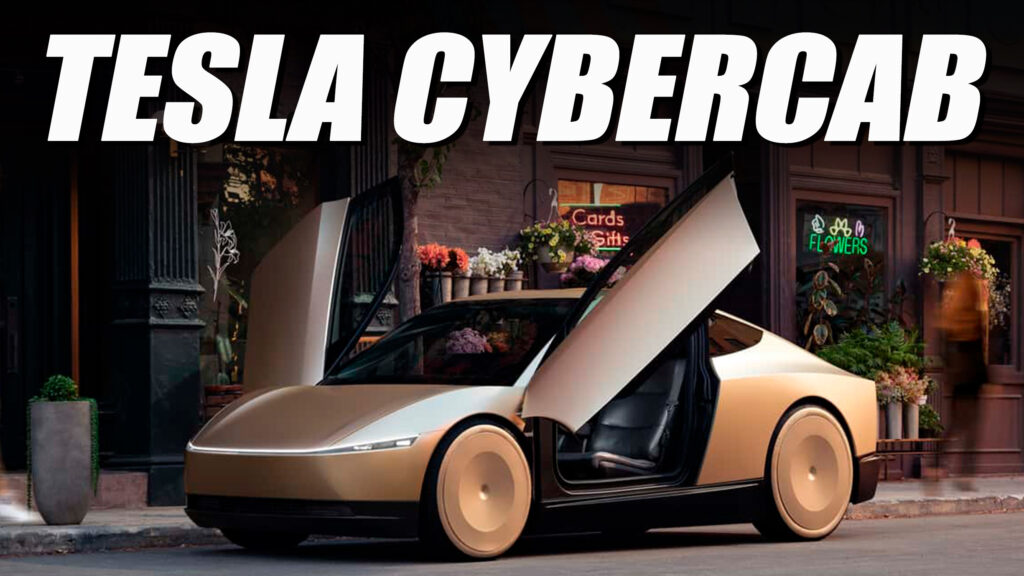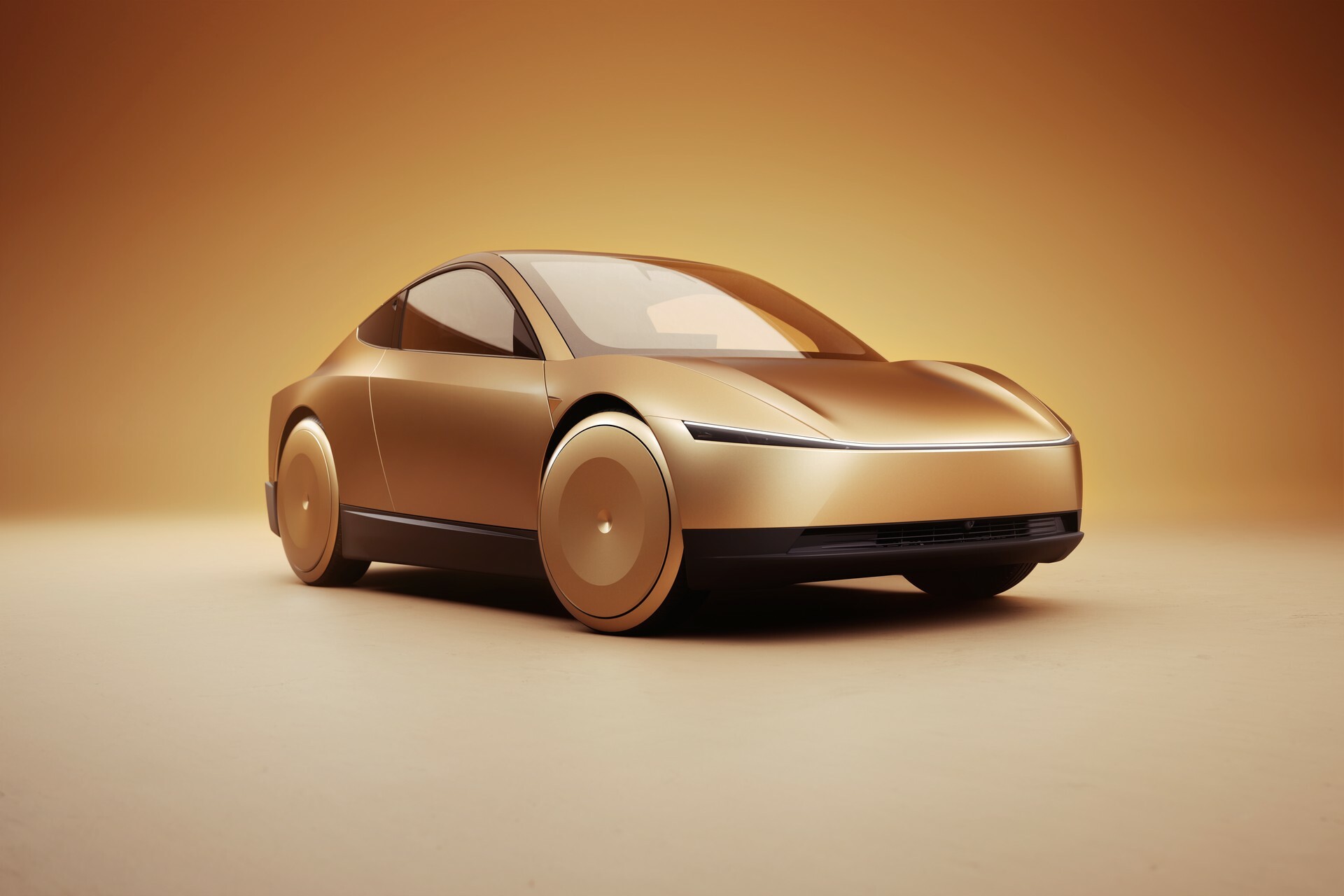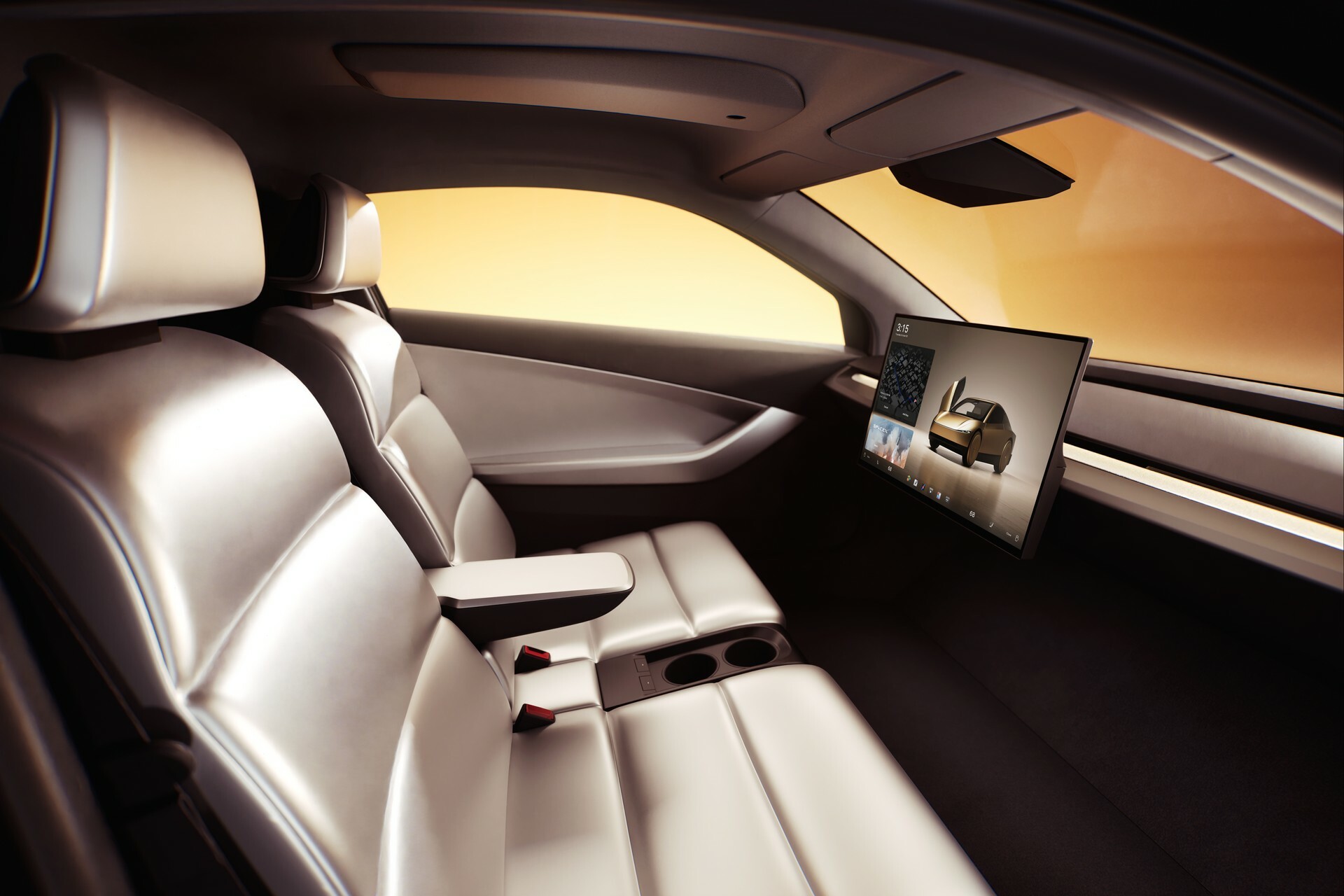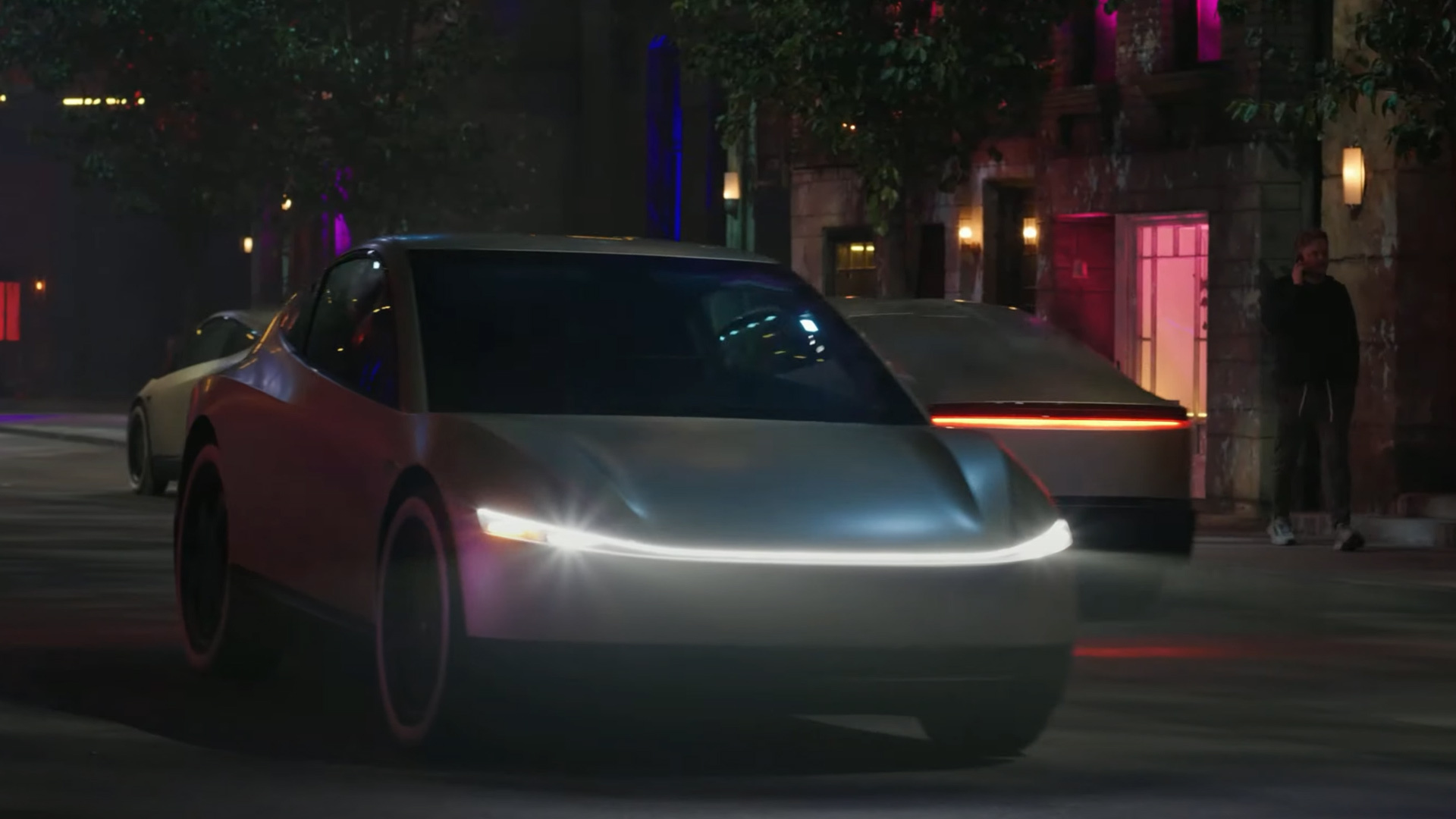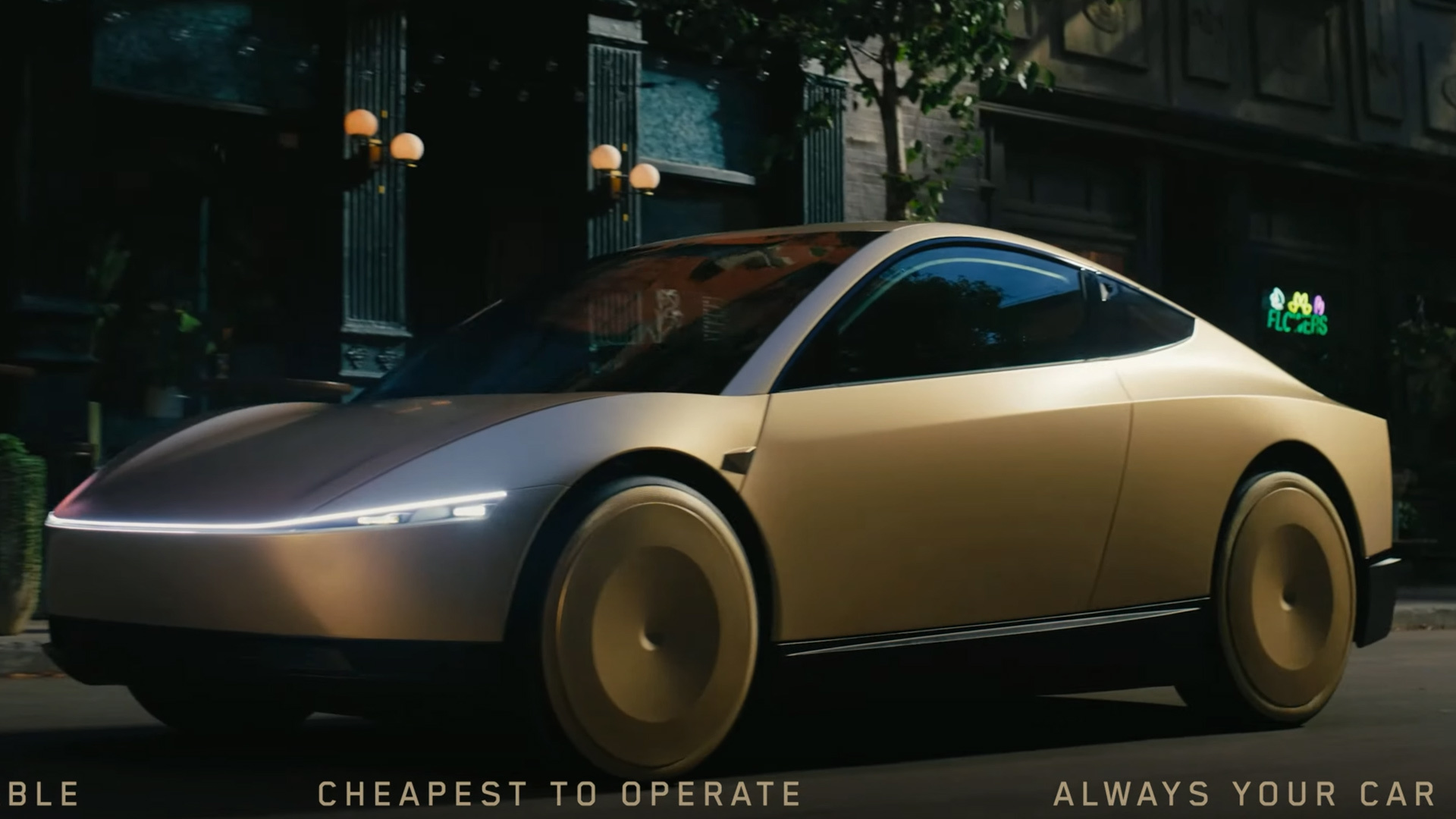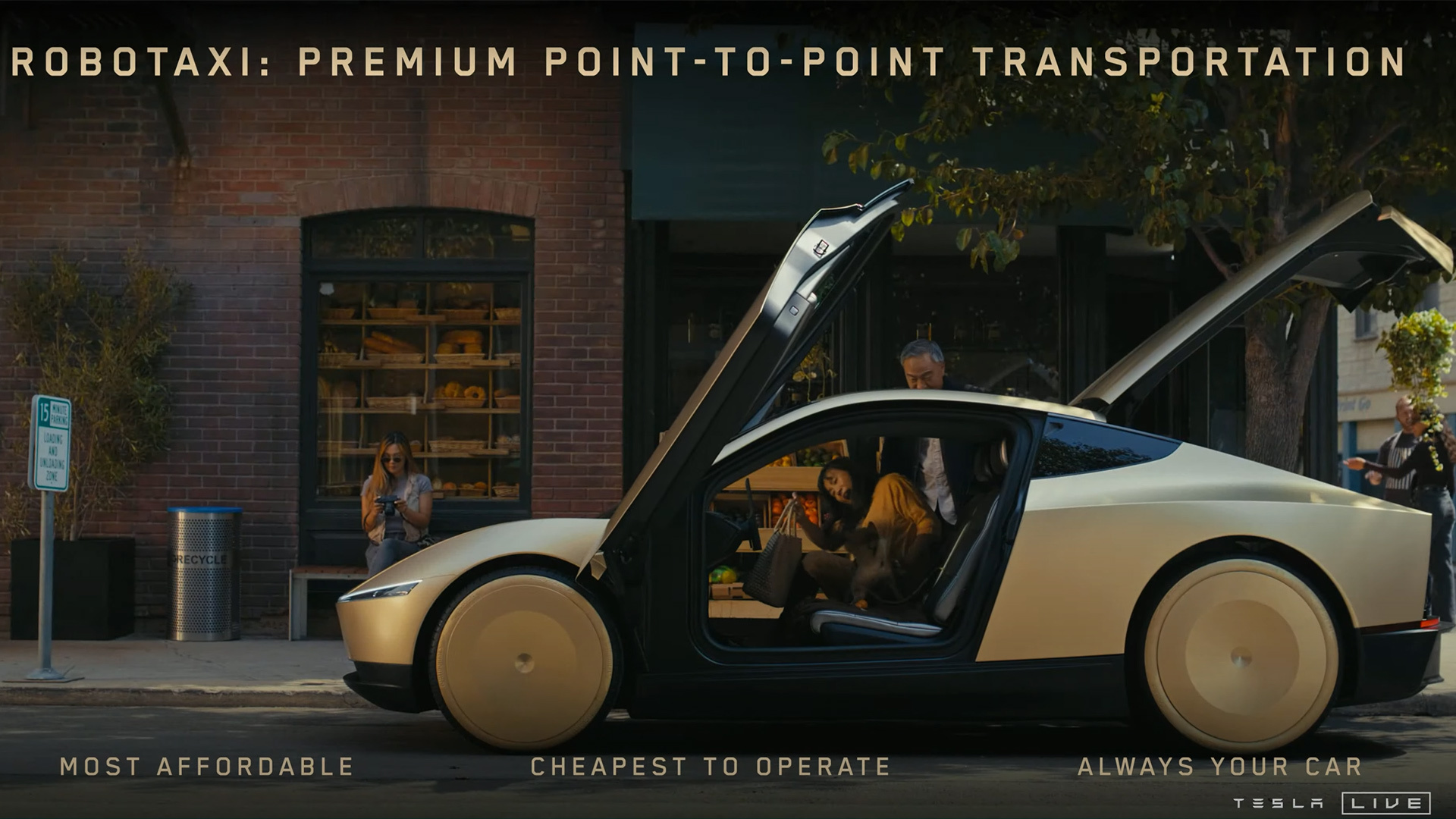- The EV has been designed without a steering wheel or pedals and should reach production in 2026.
- Tesla expects to begin rolling out unsupervised versions of its Full-Self Driving system next year.
- The car manufacturer has not yet revealed details about the car’s powertrain.
Tesla has unveiled its long-awaited robotaxi at an event in the US. The car, officially dubbed the Cybercab, takes design inspiration from the Cybertruck, and unlike many other robotaxi prototypes unveiled over the past couple of years, the Tesla will be available for private consumers to buy.
The EV is equipped with Tesla’s latest autonomous driving systems, and approximately 20 were shown at the event, offering attendees rides. The car manufacturer’s eccentric billionaire boss Elon Musk claims production will start in 2026, although during the car’s live unveiling, warned that he can be optimistic with timelines. He went on to clarify that production will begin before 2027 and that it should be available to purchase for less than $30,000.
Read: Rimac’s Verne Robotaxi Is A Sporty 2-Seat Coupe With Sliding Doors And No Steering Wheel Or Wipers
As the Cybercab has been conceived without a steering wheel or pedals, Tesla won’t be able to start manufacturing it and selling it to customers without first receiving regulatory approval to do so. As expected of any new Tesla model, the interior is extremely minimalist, offering seating for two and featuring a large central infotainment screen, seemingly lifted straight out of a Model 3 or Model Y.
Like the electric Cybertruck, the Cybercab’s exterior is dominated by a single full-width LED light bar across the front end that gives it a futuristic look. Some familiar Tesla shapes are also visible on the outside, including the sharp creases running over the hood and the pronounced rear shoulders, similar to the Tesla Model Y. A feature not seen on any other Tesla is supercar-inspired butterfly doors which, in theory, should help with ingress and egress.
The wheels feature solid aero covers, inevitably helping to boost the robotaxi’s range, while found at the rear is a solid light bar. As the car has been designed to be fully autonomous, there’s no need for wing mirrors or a rear window.
Tesla has provided no details about the Cybercab’s powertrain and hasn’t said how many miles it will be able to travel on a single charge.



